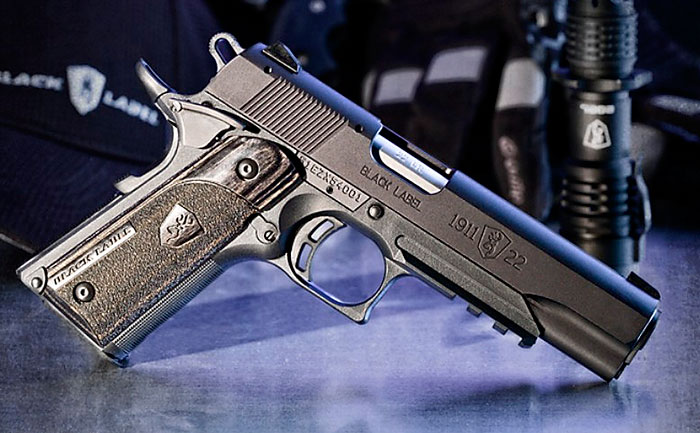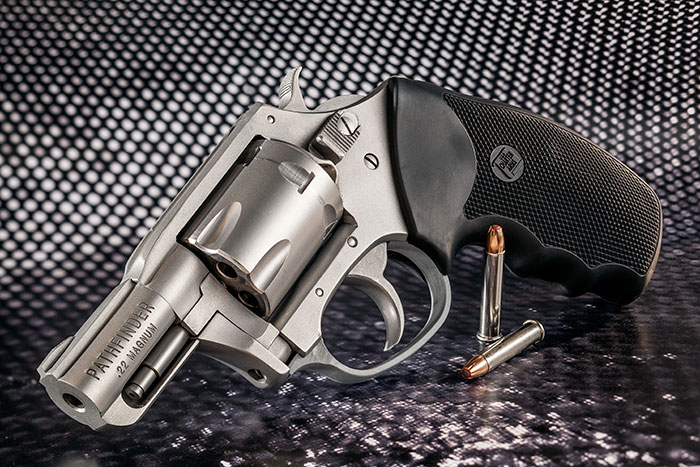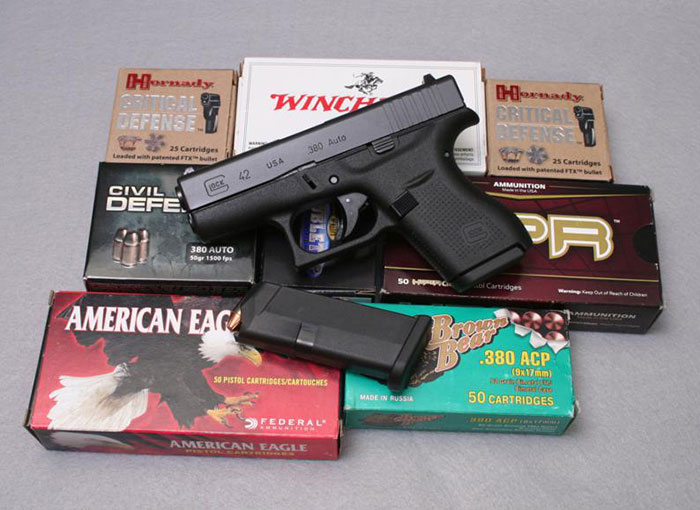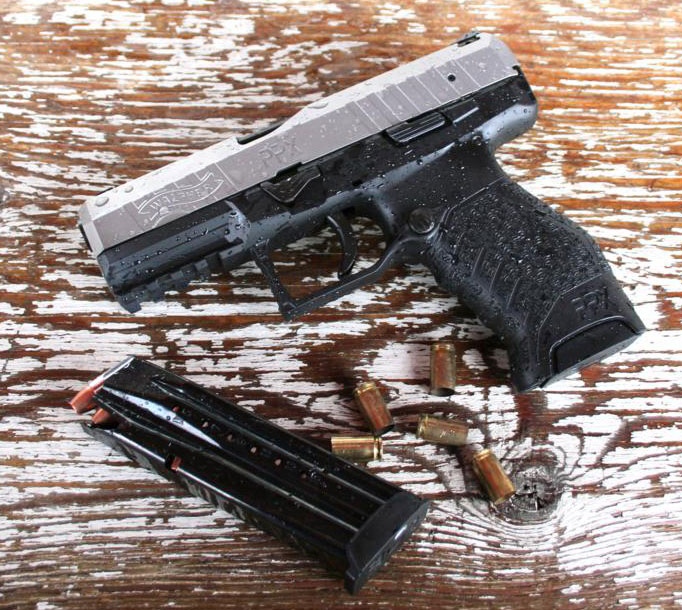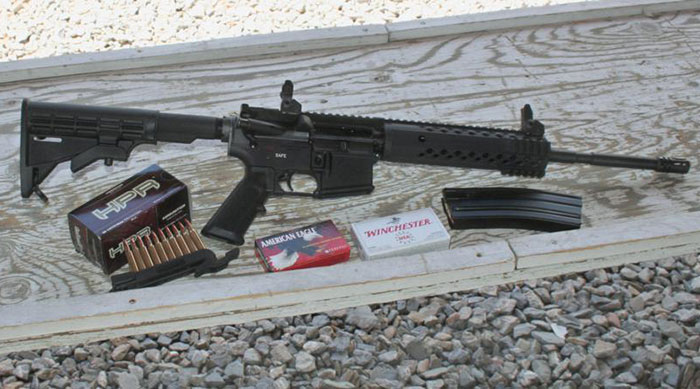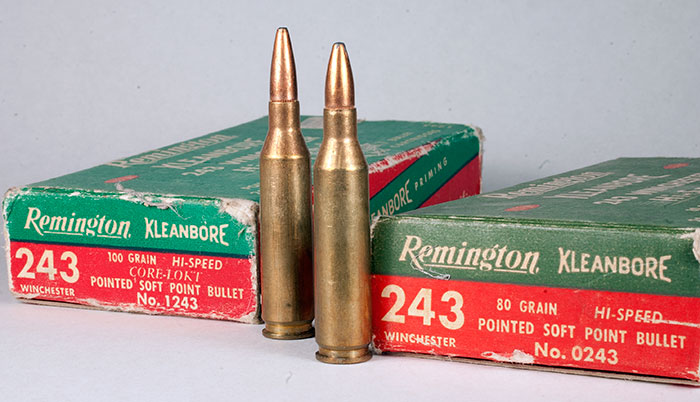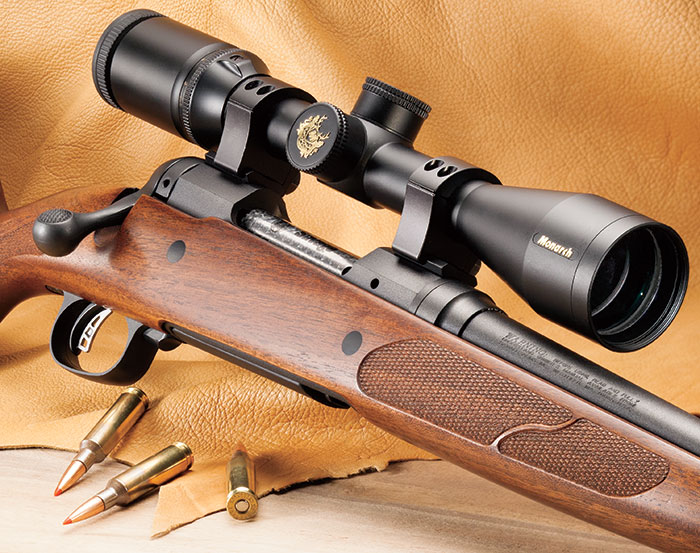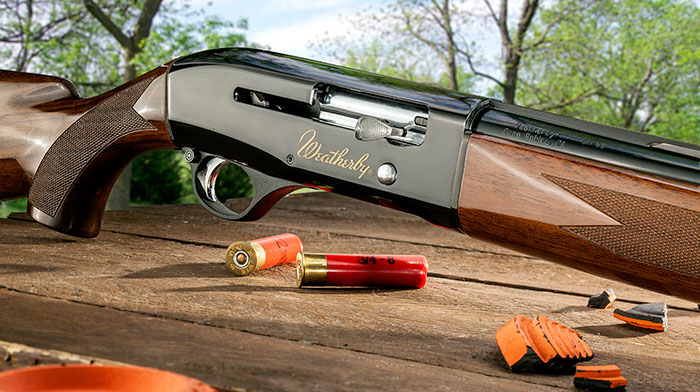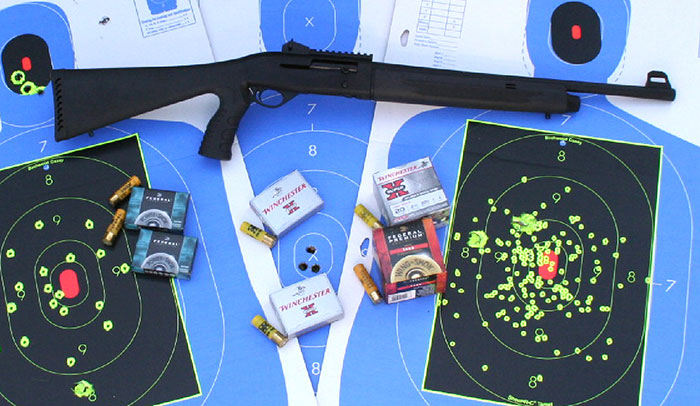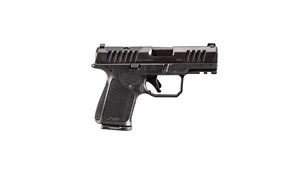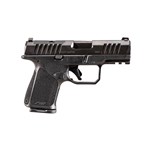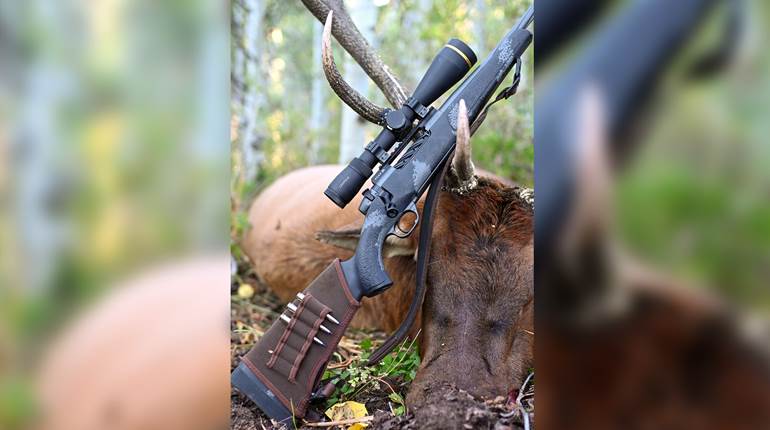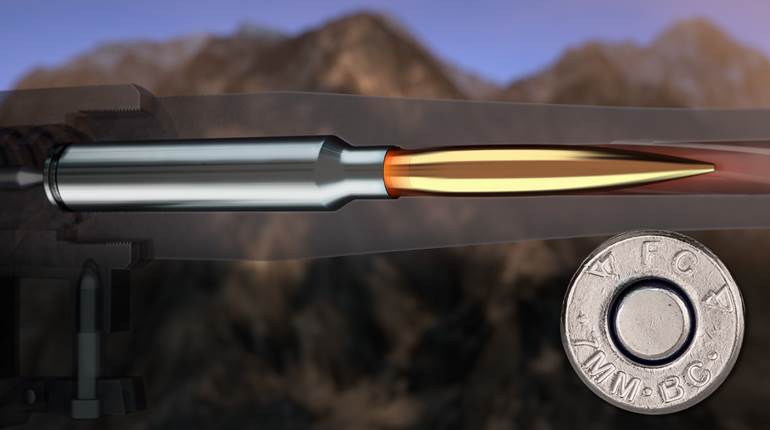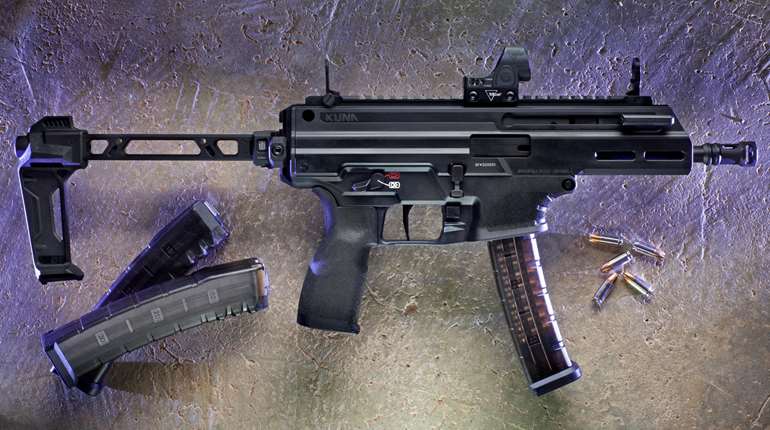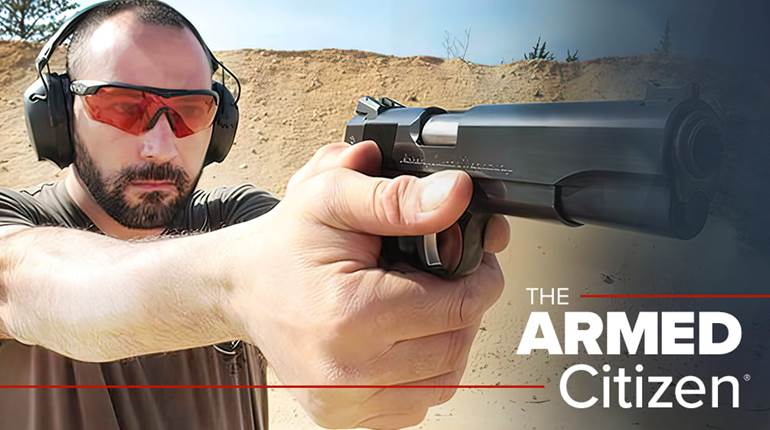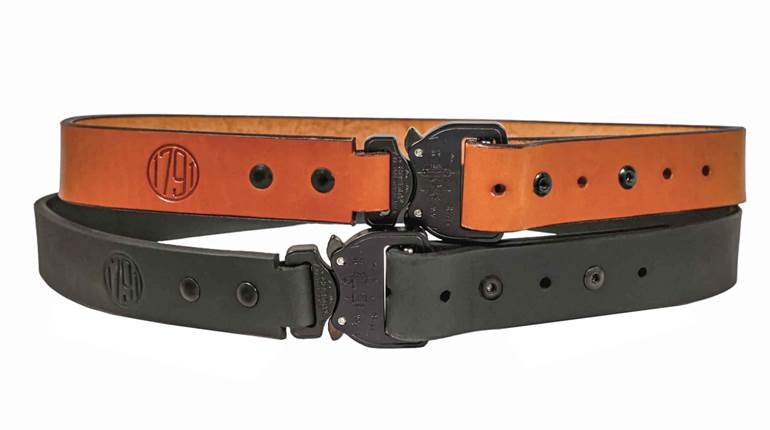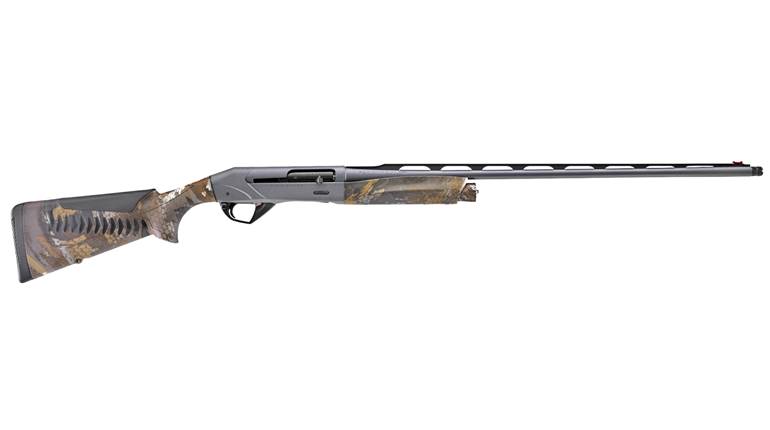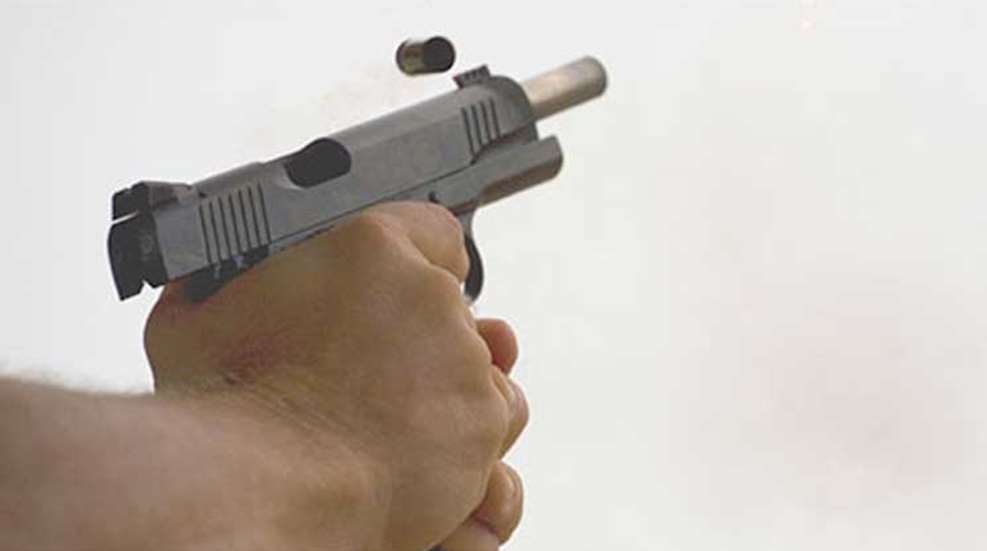
Practically the only bad thing about shooting is recoil—and there are various ways to ensure it doesn’t mess up an otherwise good thing. Read more for alternatives to taking a beating from recoil.
Beginners—or anyone—bothered by a firearm’s recoil (or kick) can always opt for lighter-recoiling guns or calibers. Of course the shooting public collectively knows this, as evidenced by the fast-growing popularity light kickers like .223 rifles and .380 handguns, not to mention the enduring dominance of the virtually kick-free .22 rimfire. You no longer hear a lot of guff from old know-it-alls who mocked those rounds or snorted at the thought of using a 9mm, .243 Win., or 20 gauge. Good riddance, I say. No matter if you’re shooting a .22 or a thunder magnum, the fundamental skills are the same, and so is the degree of difficulty. The main difference is the fun of plinking away, competing or hunting with a gun that doesn’t exact a price in pain. Let’s be clear, you can’t accomplish every shooting task with mild-mannered hardware-but you can do a lot. Here’s a look at nine low-recoil cartridge options encompassing pistols, rifles and shotguns.
.22 LR—America regards .22s as if they’re gold-plated fun. Whether handgun or rifle shooting, this is the first stop for most of us, the training tool from which we learn gun safety and the basics of sighting, breathing and trigger control. The .22 prepares us for more good times with other guns, but no matter what you shoot or how often, you will continue to find the little rimfire challenging and enjoyable, the perfect blend of “can do” and “tougher than it looks.” Most lifelong shooters wouldn’t consider not owning a .22. Kick quotient-nothing but the noise.
.22 WMR—Handguns chambered for .22 WMR are every bit as entertaining to shoot as .22 LR models, but can also be considered legitimate defensive arms, if only in last-ditch circumstances at little-more-than-arms-length ranges. From pocket-sized guns with barrels at least 1-7/8 inches long, the magnum rimfire shooting a 40-gr. bullet will penetrate light clothing and 8 inches or more of ballistic gelatin, while expanding 1.5 times its normal diameter. It’s enough to give you a fighting chance against an assailant, though bigger would be better (see the .380 ACP next). Revolvers in .22 WMR abound, some very small and concealable, as well as bigger models for plinking or pest hunting. Kick quotient-a definite twitch.
.380 ACP—In recent years, handgun makers report their biggest sales growth has come from subcompact semi-autos chambered for the .380. The rush comes on the heels of many first-time owners, women in particular, buying guns for personal protection. Although these mini-pistols don’t rival the stopping power of traditional combat models, they offer distinct advantages for everyday carry and shooting manageability. If you’ve got yours with you and have learned how to use it, you won’t go into a confrontation unarmed. Kick quotient-hearty handshake.
9 mm—Strong opinion-and evidence--still exists that the 9 mm doesn’t measure up as a stopper compared to the .45 ACP. Even so, 9 mm pistols are the pick of militaries, LE agencies and security experts around the globe. Generous magazine capacity, along with the almost-universal preference for frequent training with a moderate kicker has elevated the ubiquitous 9 mm to number one. Kick quotient-noticeable.
.223 Rem./5.56 NATO—Tried to find this stuff on retail shelves lately? Then you know you’re not alone. It’s you and a new legion of shooters psyched to fire all those recently purchased AR-type rifles in range sessions, 3-gun matches and elsewhere. Which begs the question: How much does the shooting-enjoyment factor (minuscule recoil) account for the AR’s resurgent popularity? The .223, by the way, is also a stellar varmint/predator cartridge, and a top choice for deer hunting in Texas and other states where it is legal. Kick quotient-mild bump.
.243 Win—There’s a campfire legend-corroborated by many guides-that First Nations people across northern Canada rely heavily on the .243 Win. for caribou hunting. My sources swear the ammo disappears from the local Canadian Tire shortly before the truck or supply plane leaves town, and in short order villagers are piling ATVs and snowmobiles high with carcasses. And so if it works well on a 400-pound caribou … ? Yes, it’s that much better for anything in the deer/antelope class. You can even hear .243 tales involving black bears and elk (some are true). It’s not just accuracy magic that this little caliber produces so much beginner’s luck and Arctic sustenance-everyone likes to shoot it. Kick quotient-barely more than a tap.
.260 Rem./6.5 Creedmoor/6.5-.284 Norma—This cartridge niche remains formative, with several contenders vying for market share. At their best, long-range trajectory is very impressive and knockdown with heavy-for-caliber bullets (140 grs.) is on par with the .308 Win. Accuracy with many rifles is Grade A, so much so that highpower rifle competitors flocked to the .260/6.5 newcomers a few years back, delighted with X-ring hits and the dearth of cumulative recoil. Long-range hunters have now caught on, and accordingly this class is gaining cred as the ideal balance of speed and terminal performance. Kick quotient- friendly clap on the shoulder.
28-gauge shotshell—Practically everyone who writes about 28-gauge shotguns gushes, using words like, “delightful … graceful … nimble,” etc. In fact, all those compliments come in comparison to bigger 12- and 20-gauge shotguns. And the reason the 28 fares so favorably? Less recoil. However, unlike the situation with pistols and rifles, where marksmanship proficiency isn’t dependent on gun or ammunition size (and often the smaller the better), the bigger gauges’ increased shot charges gives shooters more pellets with which to hit their flying targets. Newcomers may struggle with a 28-gauge gun, and for serious competition or hunting, 28-gauge shotguns are the tools of experts. Kick quotient-playful nudge.
20-gauge shotshell—Many might consider this one borderline, but let’s run some numbers based on popular target loads: 28-gauge ¾ -ounce-12.8 ft.-lbs. recoil energy; 20-gauge 1 ounce-21.0 ft.-lbs. energy; 12-gauge 1¼-ounce-32.0 ft.-lbs. energy. The 20-gauge skews closer to the 28 than to the big 12, which kicks 37 percent harder. Nonetheless, the aforementioned 20-gauge load with No. 8 shot packs more than 400 pellets, enough so that even rookies have a fair chance of breaking targets. Bird hunters rely on 20-gauge guns for most types of game, and while limited for geese and turkeys, hard-core dove and quail sports proudly prefer the sub-gauge.
